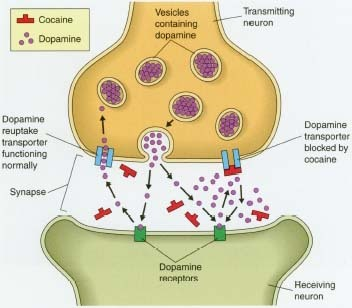Dopamine
The Dopamine is a neurotransmitter which takes place in a wide range of animals, involving both vertebrates and invertebrates. In brain, this phenethylamine functions as a neurotransmitter, activating the five kinds of dopamine receptors viz. D1, D2, D3, D4, and D5—and their variants. The Dopamine is formed in several regions of the brain, involving the substantia nigra and the ventral tegmental region. The Dopamine is also a neurohormone released by the hypothalamus. Its major function as a hormone is to reduce the release of prolactin from the anterior lobe of the pituitary.
The Dopamine can be supplied as a medication which acts on the sympathetic nervous system, generating effects like increased heart rate and blood pressure. Though, as dopamine cannot cross the blood-brain barrier (BBB), the dopamine given as a drug does not directly affect the central nervous system. To increase the quantity of dopamine in the brains of patients with diseases like Parkinson's disease and dopa-responsive dystonia, L-DOPA, that is the precursor of dopamine, can be given as it can cross the blood-brain barrier.

The function of dopamine as a neurotransmitter was discovered in the year 1958 by Arvid Carlsson and Nils-Åke Hillarp at National Heart Institute of Sweden. It was named dopamine since it was a monoamine, and its synthetic predecessor was 3,4-''d''ihydr''o''xy''p''henyl''a''lanine (L-DOPA).